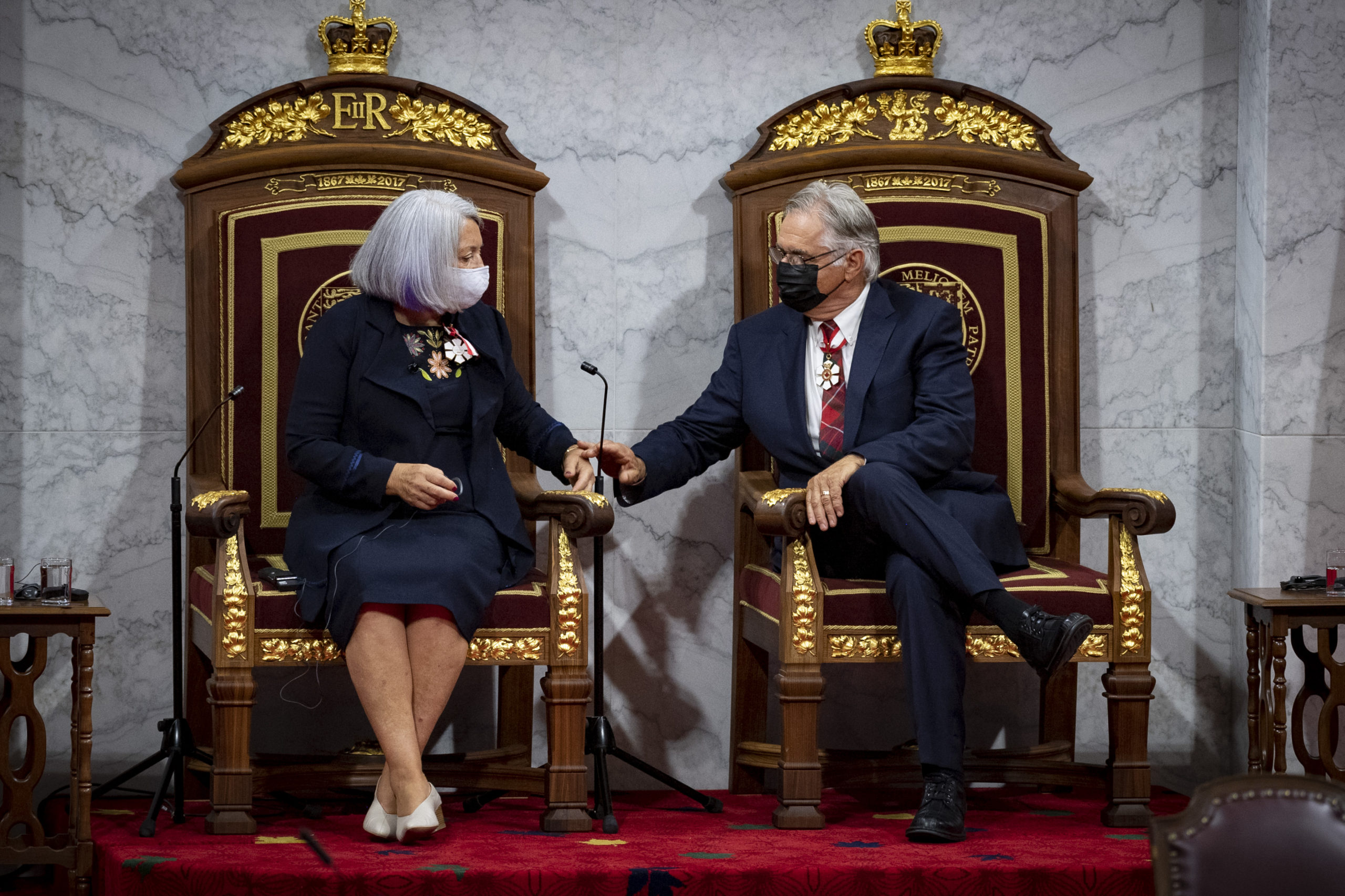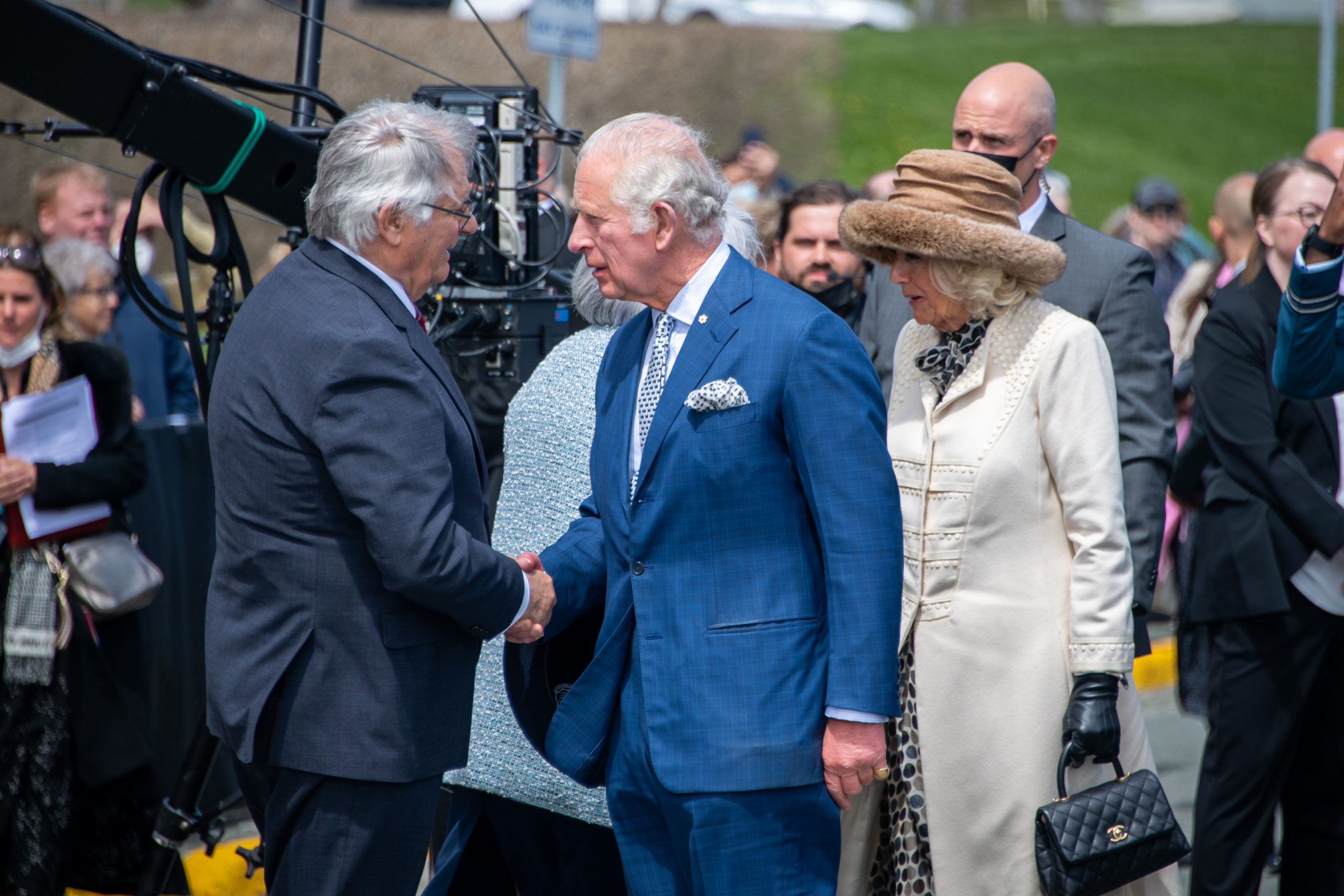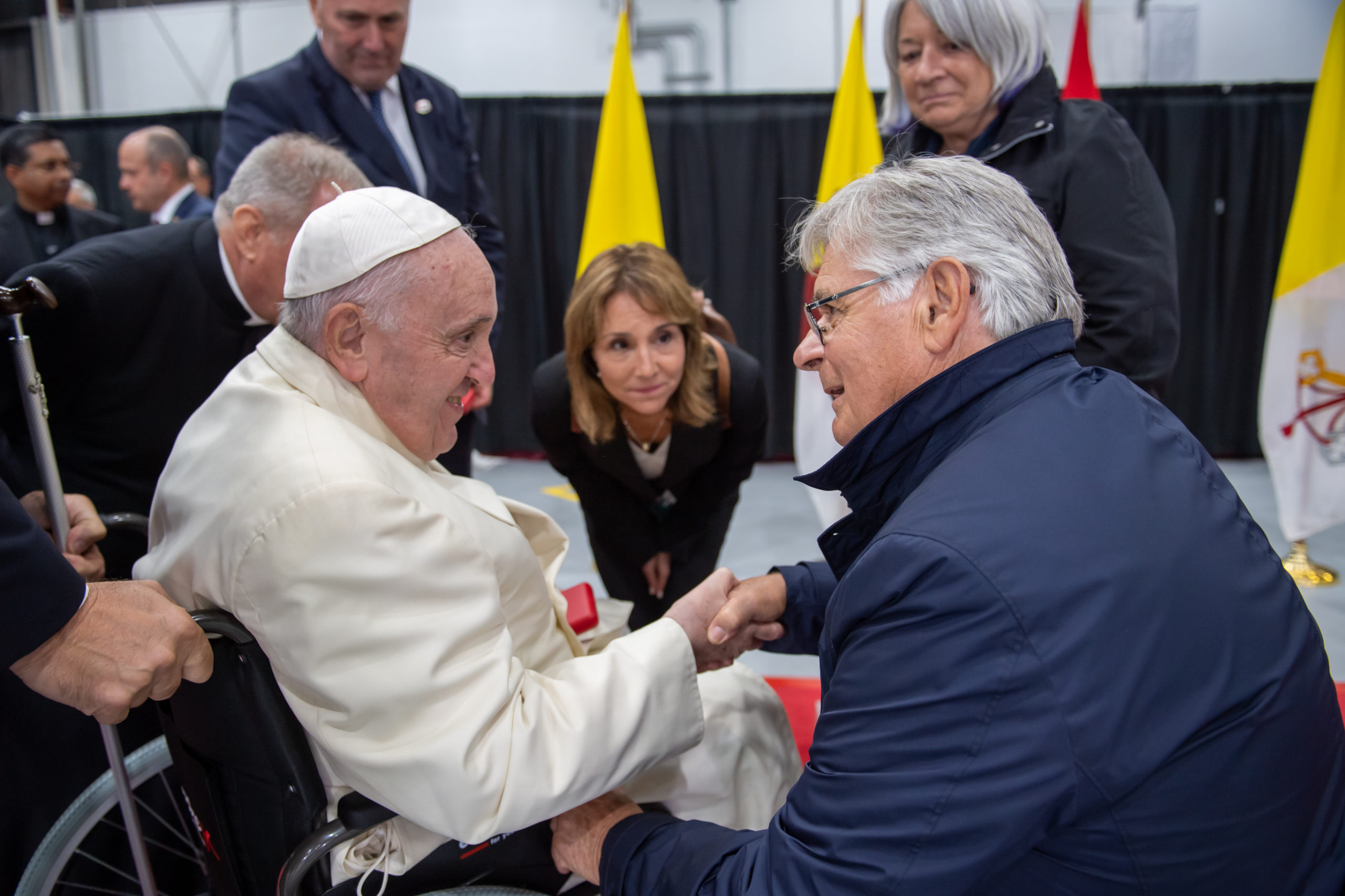Being Whit Fraser: From Reporter to Viceregal Consort
How that silver-haired gentleman next to Governor General Mary Simon is navigating the transition to a different kind of public life with a little help from his background as a reporter.
 Governor General Mary Simon and Whit Fraser, July 26, 2021/Sgt Johanie Maheu, Rideau Hall © OSGG, 2021
Governor General Mary Simon and Whit Fraser, July 26, 2021/Sgt Johanie Maheu, Rideau Hall © OSGG, 2021
Whit Fraser
September 7, 2022
The very polite request from Policy magazine was straightforward: a first-person piece about what it’s like to be the viceregal consort after a long career on the other side of the microphone — “the protocol, the people you’ve met, the elements of the experience that have surprised you?”
Confident that none of that will get me into trouble, I’m happy to oblige.
First, the surprise element was softened more than a decade ago. Some readers may recall considerable media speculation that my wife, broadcaster and diplomat Mary Simon, was being considered for Governor General after Michaëlle Jean’s term. There were no phone calls, just speculation. As we had pledged never to get caught up in the what-ifs, there was no sense of disappointment when David Johnston was appointed.
Beginning in late winter 2021, it was just the opposite —Mary got many phone calls but media speculation was sparce. Still, it was news for which we weren’t entirely unprepared.
A major surprise has been the extent to which my history as a reporter, especially memorable years roaming the Arctic from Labrador to Alaska with CBC News, have become a foundation for this sometimes surreal new life. Certainly, had I not been a reporter — a term I prefer over journalist — Mary and I would probably never have met.
In 1973, at the dawn of the Indigenous rights movement, Inuit were organizing in Cambridge Bay in the Western Arctic. The sharp young Inuit interpreter assigned to me was Mary May. Mary helped me by translating interviews, and by being my pronunciation coach. A friendship was struck that lasted 18 years, until we met at a retirement party for a mutual former colleague and discovered we were both single. We were married in 1994.
As her friend and husband, I knew Mary’s personal qualities would make her an excellent Governor General. The reporter in me had also observed Mary’s background, as a leader, a negotiator, diplomat and builder, including her advocacy to entrench Indigenous rights in Canada’s Constitution in 1982.
That experience prepared her for this pivotal time in Canada’s history, when reconciliation among our peoples, their cultures, values, and injustices challenges all of us.
While it was my experience as a reporter that prepared me for where we are today, I also remind myself that I’m now a reporter in spirit only. I’ve accepted obligations and protocols that are part and parcel of this position; conventions that need to be observed and confidences that must be respected. Conversations with fascinating people from all walks of life, once the core of my work as a reporter, are now discreetly unquotable but still a daily privilege.
Most memorable, and seeming like a fairy tale, was that a moment in the Red Chamber of the Senate of Canada on July 26, 2021, sitting beside Mary as she was sworn in, enjoying the unanimous, spontaneous laugh when she confessed to the prime minister that her Inuk name — Ningiukudluk — means “bossy little old lady”.
Conversations with fascinating people from all walks of life, once the core of my work as a reporter, are now discreetly unquotable but still a daily privilege.
As I was watching Mary, in my mind’s eye an old black-and-white newsreel from the same room 40 years earlier clicked and flickered as she challenged both Pierre Trudeau and Brian Mulroney during those years of constitutional confrontation. I was here, too, reporting for The National. No wonder, in that moment, I reached out to hold her hand.
It was the first instance of my past and present harmonizing. Since then, in moment after moment, the life I lived as a journalist has come back to help me in what I do now with Mary, representing the country I’ve come to know so well.
Last March, I met with Prince Charles at Clarence House in London. He had read his brief, observing that I had covered some of his Canada visits. He was impeccably dressed in a fine grey suit and silk tie, but I told him I could still see him in a red Jacques Cousteau diving suit, emerging from under the Arctic ice in 1975 with Dr. Joe MacInnes, legendary scientist and Arctic diver, at Resolute Bay. He was delighted.
Later that afternoon, I was able to share a warm memory with Her Majesty the Queen, for whom I was now no longer one of a swarm of royal tour reporters but an indirect report. It was a scene from 1970, in Fort Providence, NWT, in which she and Prince Philip endured hordes of black flies and mosquitoes as they stood on the bank of the Mackenzie River and fired a starting rifle to begin the 1600-mile Centennial Canoe Race. I’d share her response but that would be indiscreet.
In late May, we were in Newfoundland — myself, Mary, Lieutenant Governor Judy Foote, Prime Minister Justin Trudeau, Premier Andrew Fury, First Nations chiefs and Innu and Inuit leaders — all waiting for Prince Charles and Camilla, Duchess of Cornwall, to arrive at the legislature from the airport.
 With Prince Charles and the Duchess of Cornwall, St. John’s, May 17th, 2022/Sgt Mathieu St-Amour, Rideau Hall © OSGG, 2022
With Prince Charles and the Duchess of Cornwall, St. John’s, May 17th, 2022/Sgt Mathieu St-Amour, Rideau Hall © OSGG, 2022
There was a prolonged silence. Somebody needed to tell a story.
I pointed to Government House, directly behind us, and recalled that in 1978 or 79, then-Premier Frank Moores announced a development in the southwestern corner of the province. I don’t recall the headline but I’ll never forget our exchange. “Premier, how will that affect” – in the terminology of the time- “the Native people at Conne River?” I asked. Moores bluntly replied, “There are no native people in Newfoundland.” The moral of the story? Reconciliation is a long road — especially when one partner first has to emerge from official nonexistence. Conne River is now known as the Mi’kmaq Miawpukek First Nation.
Some may say it’s a small world. I like to think of it as a very big world, but beautifully connected.
During our trip to the Middle East earlier this year, a Sheikh fascinated with the Arctic climate asked in wonder “How cold does it get?” Facing the difficulty of explaining what minus-40 feels like to someone who lives in the extreme heat of the desert, I stood, stretched out my arm leaving roughly five feet between my hand and the gleaming marble floor. “Your Highness, the ice freezes this thick and people chop holes to catch fish.” He smiled. “I want to go there.”
The visit by Pope Francis in July to begin the process of reconciliation between Canada’s Indigenous Peoples and the Catholic Church was solemn, sacred and unforgettable, as was our earlier visit to hundreds of unmarked graves at the old Residential School in Kamloops. It brought back memories of old friends who had survived those schools.
 With Pope Francis in Iqaluit, July 29, 2022/MCpl Anis Assari, Rideau Hall © OSGG, 2022
With Pope Francis in Iqaluit, July 29, 2022/MCpl Anis Assari, Rideau Hall © OSGG, 2022
When I was introduced to Pope Francis, I was honoured to recount another visit, by His Holiness Pope John Paul II, to Fort Simpson in 1987. He was keeping a treasured promise to return after a dense fog had forced him to turn back three years earlier. Some may say it’s a small world. I like to think of it as a very big world, but beautifully connected.
Later in the Pope’s visit, I was standing at the airport in Iqaluit when the pontiff landed for the final leg of what he called his “pilgrimage of penance”. This was familiar ground to me — my first job as a CBC reporter was right here in 1967, when it was known as Frobisher Bay.
Beside me was Canada’s Chief of Protocol, Stewart Wheeler, the son of Dr. Ross Wheeler, a dear friend from Yellowknife in the 1970’s who is, sadly, long deceased.
Stewart is with us on every foreign trip, and because of our shared memories of his dad, he is a friend and a comfort.
We watched the papal-tour media horde stampede across the tarmac.
“Do you miss it?” he asked.
“No, Stewart, but I loved every minute of it.”
And at the end of our day in Iqaluit, Mary and I and the staff enjoyed a Caribou burger at the Frobisher Inn and went to sleep.
As I embrace with gratitude this remarkable journey — a great gift full of infinite recollections and revelations — staying up half the night filing reports is in the distant, very satisfying, past.
Whit Fraser is the viceregal consort of Canada. He spent decades covering the North for CBC News, as well as serving as a national reporter in Ottawa. His novel The Cold Edge of Heaven is available now from Boulder Books.
